Last-Minute NYC Holiday Gift Guide 🎁
We’ve created a holiday gift guide with presents for the intrepid New Yorker that should arrive just in time—


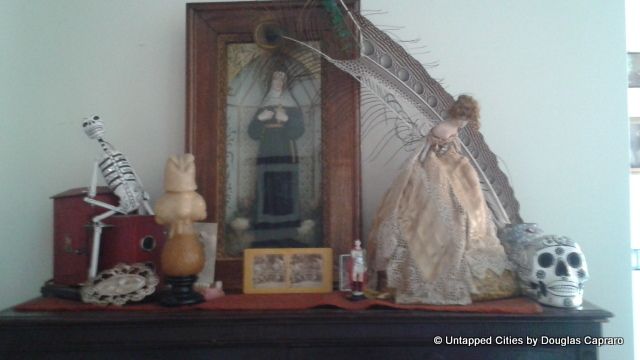
We here at Untapped Cities are always interested in uncovering the unseen, unnoticed, or misunderstood aspects of urban life. As such, we were super excited to speak with Morbid Anatomy Museum founder Joanna Ebenstein who, along with a community of “rogue scholars”, is dedicated to harboring some of the weirdest and most obscure artifacts in the world. We chatted with her about the roots of her unorthodox museum, which just opened two weeks ago in Gowanus, and its newest exhibit, The Art of Mourning.
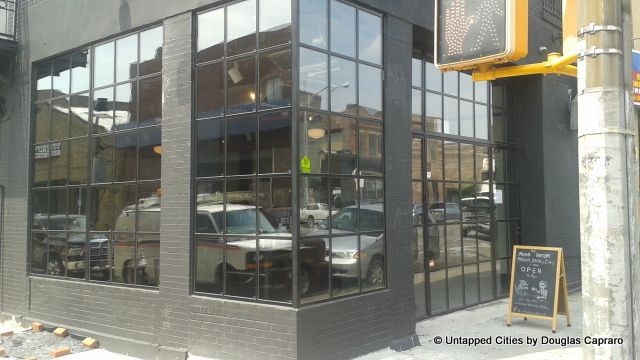
Since our last coverage of the museum’s previous incarnation as the Morbid Anatomy Library within Proteus Gowanus, the institution has expanded and moved nearby to 3rd Avenue and 7th Street. Looking at the array of artifacts and images that comprise the Art of Mourning is an emotionally tumultuous and thought provoking experience.
Notable among the collection of oddities in this exhibit are a series of memorialized photographs of deceased children in open caskets, a form of mourning from the 19th century that was only affordable to the wealthy (children died more frequently at that time due to illness and a lack of proper medical knowledge). Other artifacts in the exhibit include a variety of ornamental wreathes and mementos that were partially constructed from the hair of the deceased. These inventive mourning practices are all beautiful to behold and are indicative of a time when mourning was indeed an art form.
Ebenstein is insistent though that people do not misinterpret the subject matter of this exhibit as morbid or macabre, saying that “This is not just a morbid human being in the past who thought it was cool to put a picture of a loved one in their coffin, this is what people did all the time.” As a result, she questions people’s general aversion to subject of death by asking “How have we changed that [these photographs] look bizarre to us now?” This exhibit forces us to question how the way in which we deal with death has changed since these artifacts were created and that “Maybe we are the ones that are morbid because we refuse to deal with death at all.”
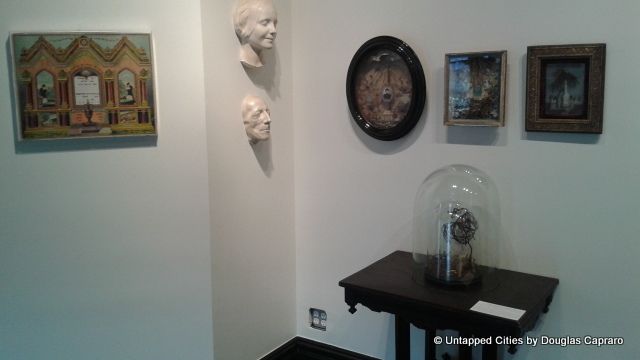
According to Ebenstein, the exhibits allow visitors to come to their own conclusions about the work on display. As she puts it, “One thing I’m trying to do here is give people the opportunity to directly encounter this material culture they would never see. There is information out there if you want it but I don’t want to intrude too much on the experience of just encountering the object if that’s what they want.” This is one of the reasons that a lot of things in the museum do not have labels. She is also aware of the fact that her bizarre interests could be misinterpreted though.
Originally, Ebenstein created a blog in 2007 to display her photographs of oddities from medical museums all over Europe. But as a graphic designer working for a larger company, she originally published her work under a pseudonym thinking “Oh my god, if they ever find out I do this weird stuff they’ll fire me.” Surprised by the amount of interest in her blog, Ebenstein decided to expand upon the same subjects by creating a physical, appointment-based library in Gowanus.
The library went on to become one of the most comprehensive collections of oddities and bizarre historical information in the world. Subjects artifacts included pickled animals, post-mortem photography, and of course, morbid anatomy. As support for her endeavors increased, Ebenstein finally went ahead with her dream to create an actual museum space, which opened two weeks ago.
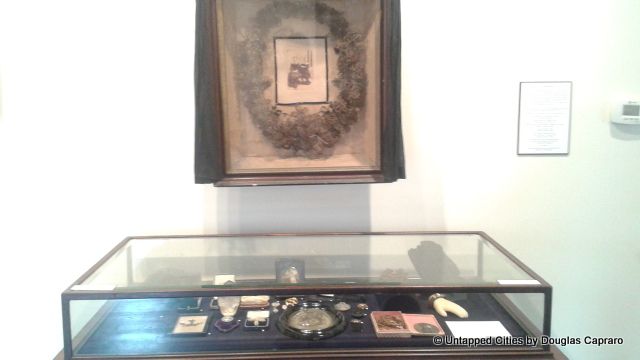
Ebenstein was certainly not alone in her efforts, stressing the importance of the many private collectors that she had met as a photographer. “Just by the nature of this stuff,” she said, “the people who are usually into this also collect this stuff because there is no museum where you can see it.” Outside the confines of collector’s homes, many of these amazing artifacts could have previously gone completely unseen by the rest of the world. She coined the term “rogue scholars” to describe the kind of role that these collectors play. “They are not scholars in the proper sense but they collect material culture around something and they begin to understand it in that way.”
Of the eight collectors featured in the Art of Mourning exhibit is the co-owner of Obscura, an oddities shop on Avenue A that has become the subject of a popular reality show called Oddities. Like all of the other collectors involved in the Morbid Anatomy Museum, she is friends with the owners of Obscura. This sense of community is something that Ebenstein sees as pivotal aspect of her museum. Along with a focus on lecture series at the museum, including an upcoming lecture on death and Catholicism in Mexico, she sees her museum as a continuation of Obscura’s efforts to “Cultivate and nurture a community.” Overall, she believes that “In a way this is what I come to understand this all to be.”
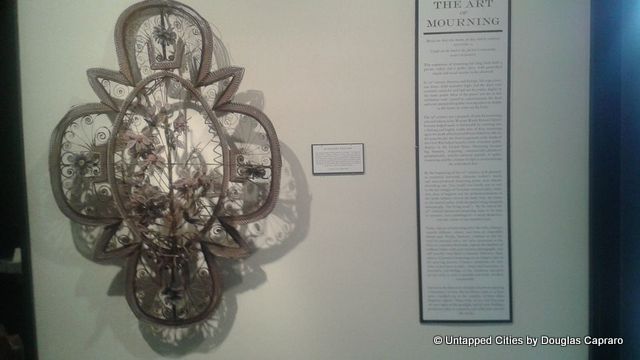
The Art of Mourning exhibit is currently on view until December 4th and visiting hours are between 12:00 p.m. and 6 p.m. everyday except Tuesdays. Also, be sure to check out our coverage of the original Morbid Anatomy Library last year. More information on the museum available on its Facebook page.
Get in touch with the author @DouglasCapraro
Subscribe to our newsletter